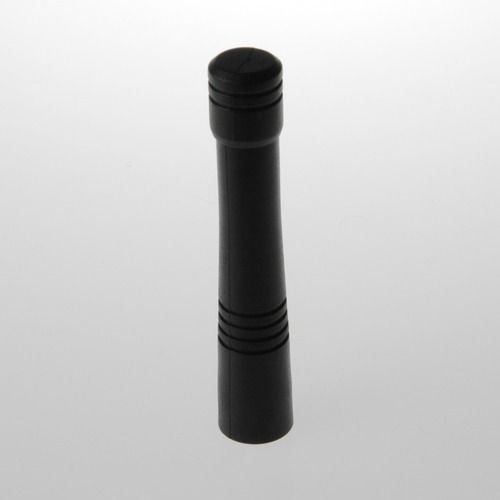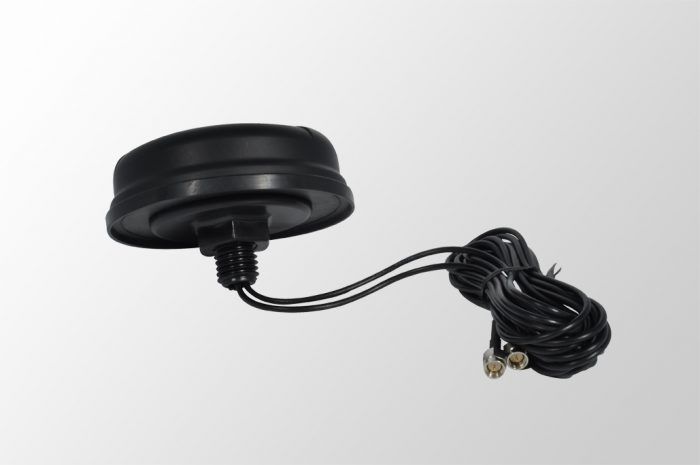Latest News
News

Four 433 MHz terminal antennas for ISM bands
Focusing on 433 MHz frequencies, we present here four 433 MHz terminal antennas for ISM band applications. Many 433 MHz applications require a terminal mounted antenna, typically with a SMA-Male connector. EAD offers a number of interesting solutions for ISM licence-free frequencies and we summarise them here.
WR/WS433 – 433 MHz stub antenna
The WR433 and WS433 antennas are compact quarter wave, groundplane dependent stub antennas. Requiring a groundplane (metal mounting surface) to operate efficiently, the WR433 and WS433 are usually terminated in a SMA-Male connector. Containing a 1/4 wave coil, the antenna element is housed in robust and durable acetal sheath.
433 MHz captive mount antenna
The W433-FLY is a captive-mount 1/4 wave whip antenna with flying lead. The design enables the antenna to be integrated into the wall of an enclosure and the cable fed inside to the radio. As standard the cable is RG174 for a SMA, RP-SMA or MMCX connector, however it can be offered with a U.FL flying lead for radios mounted with U.FL receptacles. The W433-FLY does require a groundplane to operate effectively.
433 MHz quarter-wave helical antenna
The MH433 is a quarter-wave moulded helical antenna usually terminated in SMA-Male connector. Requiring a groundplane to operate effectively, the MH433 is compact whilst retaining some flexibility which is especially helpful in mobile applications. Other frequencies and connectors based on this design are possible, please contact us for more information.
433 MHz groundplane independent whip antenna
The FEW433 is a 433 MHz whip antenna that doesn’t require a groundplane to operate. Based around a moulded sheath, the FEW433 is flexible, however offers robust performance. It is available with the SMA-Male or TNC-Male connector as standard although a RP-SMA connector is also possible.
Four 433 MHz terminal antennas for ISM bands
These antennas are not the only 433 MHz antenna options available from EAD. We can also offer wall-mount or 1/4 wave whip antennas. If you do not see what you need, please use our antenna configurator to determine your requirement.

Hot Product – WTR7270 4G LTE terminal antenna
The WTR7270 4G LTE terminal antenna is an innovative solution for fixed and mobile applications requiring a blade-style antenna with a SMA-Male connector. Supporting worldwide 4G LTE bands from 700-2700 MHz, the WTR7270 offers a practical solution for mobile and fixed devices, routers and terminals whilst offering robust performance in a sleek black sheath.
Complementing many 4G and LTE routers and terminals, the WTR7270 is one of the most popular EAD antennas alongside the MIMO-Blade and the LMO7270 products. For further details on the WTR7270, please visit the product page.
For European customers, you can purchase small quantities online at www.connextech.co.uk or alternatively contact your local EAD distributor.
The formal part number is FWTR35292-SM-KR.
Four interesting antenna solutions for 868 MHz
We take a look at some interesting antenna solutions for 868 MHz that might be used for LoRA or Sigfox applications. 868 MHz in many parts of the world is a licence-free frequency band. Increasingly this frequency band is being used for IoT networks for longer range access for data applications. That being said no one antenna is suitable for every application, therefore many customers need to consider what mounting option is required and where best to position the antenna when designing an installation. Here are four suggestions:
868 MHz multi-position dipole antenna
For fixed and mobile terminals where the orientation of the device is not always certain, sometimes it helps to consider a multi-position antenna where the antenna can be moved from the horizontal to the vertical position. Terminated with a coaxial connector such as SMA, RP-SMA or TNC for example, the antenna element can be lock in three places depending on the installation.
868 MHz captive-mount monopole antenna
For applications where you would need a small quarter-wave antenna, but want to discourage the removal of the antenna from the application, you could consider a captive mount model. This means that the base of the antenna is mounted through the terminal’s metal enclosure and held in place by a locking nut. A coaxial cable feeds from the bottom of the antenna through the mounting boss and can connect to the radio module.
High gain 868 MHz outdoor omni antenna
For fringe areas of signal, a 5-6 dBi outdoor omni-directional might be useful. Wall-mounted and supplied with a 5M cable to connect to the radio or device some way away, this high gain antenna can often aid reception in difficult installations. Fully weatherproof with a fibreglass tube, this antenna can be mounted outdoors permanently.
Internal 868 MHz PCB dipole antenna
A half-wave groundplane independent PCB antenna, this enables the antenna to be installed inside a non-metal terminal enclosure enabling a discreet, but functional antenna installation. Various cable and connector options are possible including U.FL, MMCX and SMA.
This list of antenna solutions for 868 MHz is not exhaustive so if you cannot what you need here, please feel free to e-mail us or use our antenna configurator.

multiband transit antenna platform – VLP4 antenna
The VLP4 antenna is a multiband transit antenna platform designed primarily for on-vehicle use. Based on a low profile footprint, the VLP4 can be developed to meet customer specifications for VHF, UHF, TETRA and multi-band frequency bands.
Examples of antenna configurations might be LTE450 + LTE 700-2700 MHz, 2 x LTE 450 MHz, TETRA + LTE or LTE450 + LTE 700-2700 + WiFi.
The antenna mounts directly onto a flat metal surface and requires a groundplane to operate correctly. The cable(s) exit underneath through a gland in the base plate.
Please feel free to contact us with your requirements for the VLP4 antenna. Some requirements may require additional chargeable development work depending on the parameters of the project.
You can also use our antenna configurator to help build your customised VLP4 multiband transit antenna platform solution.

EAD range of CPx puck antennas IP67 rated
EAD puck antennas IP67 rated. EAD is pleased to announce that it’s range of CPx puck antennas is now IP67 rated.
An IP (International Protection or also known as Ingress Protection) rating is a system of classifying the level to which a mechanical casing or electrical enclosure can withstand intrusion by dust and moisture/water. IP67 is a common requirement for outdoor antenna installations and means that it is totally protected against the ingress of dust and also protected against the effect of immersion between 15 cm and 1M.
The range of EAD puck antennas including the following models are all now confirmed to be IP67 compliant when correctly installed onto a flat enclosed mounting surface such as vehicle roof or watertight enclosure:
CPO – GSM/3G puck antenna
CMO – MIMO 4G/LTE puck antenna
CMG – MIMO 4G/LTE + GPS/GLONASS puck antenna
CLG – 4G/LTE + GPS/GLONASS puck antenna
CLW – 4G/LTE + WiFi puck antenna
CLWG – 4G/LTE + WiFi +GPS/GLONASS puck antenna
For more information on any of the above antennas, please contact us.

WCO-450-WMB – 450 MHz Compact Outdoor Omni
The WCO-450-WMB is a 450 MHz compact outdoor omni antenna designed for wall-mount applications for providing access to 450-470 MHz LTE or UHF networks.
Based on our WCO-XX-WMB platform, this antenna is comprised of a UV-resistant, flame retardant sheath and stainless steel L-bracket for wall-mounting. This antenna combined with low loss extension cables such as RF240 is an effective and discreet solution for installations where the antenna cannot be located close to the router or radio.
Other versions for the WCO-XX-WMB include 2.4 GHz and 433 MHz. 915 and 868 MHz versions are also available. For WCO-450-WMB pricing and lead times, please contact us.
We can supply other frequencies based on the WCO-XX-WMB platform from 150 MHz to 6 GHz. Please contact us for details.

169 MHz ISM band antennas – a reality check!
169 MHz frequency band
The advent of the EU harmonized ISM band at 169 MHz offers utility businesses a viable alternative to using higher frequencies for wireless metering by using 169 MHz ISM band antennas. Using the 169 MHz VHF frequency band, wireless technology can be deployed for longer range applications at relatively low power due to the low frequency of operation. This has many advantages for operations and billing departments.
Challenge
The challenge however comes with specifying 169 MHz ISM band antennas to go with the wireless meters. There are already a number of ISM-band 169 MHz module and terminal vendors on the market and I am sure there are more in development. An interesting example of a terminal/gateway supplier is Meterlinq. From a RF perspective the module/terminal is relatively straightforward, but to supply compact, discreet antennas is not as easy.
A wavelength at 169 MHz is approximately 1.8M in length and therein lies the problem, for even a 1/4 wave monopole would be half a metre in length once the antenna has been housed in a protective sheath and connectorized.
For metering applications in domestic environments, discreet, tamper-proof antennas that cannot be easily damaged are desirable, but not only is making a very low profile 169 MHz hard to achieve, it would also need a large groundplane to function correctly. This is not straightforward on a small-sized utility meter with little metal real estate. The viable options really are to use a 1/4 wave 169 MHz helical antenna either bulkhead mounted with a RF connector or a through-hole mounted antenna (the link shows a through-hole mounted antenna on a bracket) so the antenna cannot be unscrewed from the meter. Both options would be approximately 120mm in overall length and would ideally need a minimum groundplane size of 85mm x 85mm. This size of groundplane could be possible on most meters, but a larger groundplane required by lower profile antennas are more than likely not going to be possible.
Concentrator applications
For concentrator applications (where a number of remote meters communicate with a hub using VHF communications), a wall-mount 169 MHz antenna might come in useful. Designed for outdoor use, ideally these will be of fibreglass construcion to withstand the elements.
It is also important to be wary of very small 169 MHz antennas as invariably some parameter will be compromised, for example small 169 MHz PCB antennas with a gain of -17.6 dB. It is useful to remember that the laws of physics are not going to change and that the wavelength is always going to be 1.8M. Very small antennas are going to massively compromise RF performance, defeating the very object of the exercise.
169 MHz ISM band antennas – a summary
In conclusion, the 169 MHz band is a real opportunity for wireless metering and related applications, however the selection of 169 MHz ISM band antennas and design-in for the meter must be considered early and with the appropriate level of planning to ensure that a suitable antenna design can be accommodated by the meter in terms of available groundplane etc. without comprising performance or aesthetics.
Related links:
Design your own antenna with our Antenna Configurator
Please note: This article was first published on the Specialist Antennas blog and we have updated and enhanced for this issue.

New Product – CLW LTE WiFi puck antenna
The new CLW LTE WiFi puck antenna is designed to offer concurrent 4G/LTE and WiFi communications in a single low profile antenna enclosure. With one SMA cable for LTE and one RP-SMA for WiFi, the antenna connects to each port on a terminal or router offering multiband connectivity. Cable lengths and connectors are configurable.
The CLW antenna mounts via a robust threaded stub and locking nut from underneath and has a gasket providing a waterproof seal when correctly mounted to a flat surface.
Other products in the same stable are the CMO – 2 x LTE, CLWG – 1 x LTE, 1 x WiFi and 1 x GNSS and the CMG 2 x LTE and 1 x GNSS. For other combinations or variations on the theme, please contact us or use our Antenna Configurator.

LPO Multiband MIMO antenna announced by EAD
The LPO Multiband MIMO antenna has been announced by EAD. Offering 2 x LTE, 2 x WiFi and one active GPS/GLONASS antenna element, the LPO is a robust and practical solution for bus, truck, transit and vehicle applications where 5 antennas for multiband communications need to be installed.
With excellent RF performance in an enclosure 140mm in diameter and 80mm in height, the LPO is permanently mounted via a threaded stud and locking nut underneath. Gain figures for LTE are 3-4 dBi and 5 dBi for both 2.4 and 5 GHz WiFi bands.
For more information and availability on the LPO antenna, please contact EAD or your local EAD representative.

Product update – FGO high gain LTE omni antenna
The EAD FGO high gain LTE omni antenna has been relaunched. This second generation antenna has an improved mounting bracket for pole or wall-mounting. The fibreglass tube has been retained, although the tube is slimmer than the previous version. Gain figures remain the same at 4-5 dBi across the frequency bands from 690-2700 MHz.
The FGO antenna is terminated in a N-Female connector allowing the installation of low loss jumper cables alongside the FGO. Popular low loss cable choices include RF240 and RF400 cable.
For small volume requirements, you can purchase the FGO via the Connex webshop. For larger or ongoing requirements, please contact EAD or your local distributor.
